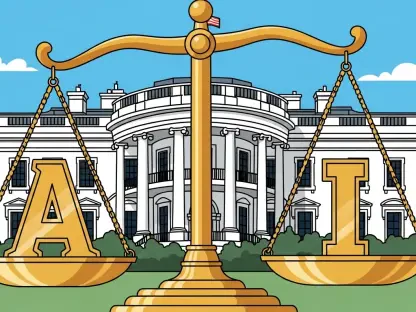Listen to the Article
In the corporate world, the terms “confidential” and “privileged” are often used interchangeably, yet they convey distinct meanings. Consider them as siblings rather than identical twins. While both concepts involve protecting sensitive information, confusing them can lead to the inadvertent waiver of legal privilege, exposing a company’s most critical legal strategies to opponents in litigation.
Most leaders believe that looping in a lawyer is enough to shield a conversation, but that can lead to costly mistakes. Modern business practices, such as lengthy email threads and shared Slack channels, can easily compromise attorney-client privilege. Understanding the sharp distinction between the broad ethical duty of confidentiality and the specific legal protection of privilege is no longer just a task for the legal department. It’s a critical risk management function for the entire C-suite.
This article examines the key differences between these two concepts and highlights common corporate procedures that put privilege at risk. It provides a clear framework for navigating these boundaries, ensuring that a company’s legal defenses are not dismantled from within.
A Locked File Cabinet vs. a Legal Force Field
The easiest way to understand the difference between the terms “confidential” and “privileged” is through a creative analogy:
Confidentiality is the locked file cabinet. It’s an ethical and contractual obligation for professionals, such as accountants and lawyers, to protect all client information from unauthorized disclosure. This duty is broad, covering nearly everything a client shares.
Privileged communication is a legal force field. It’s a much narrower, court-recognized protection that prevents certain communications from being compelled as evidence in a legal proceeding. This shield primarily protects conversations between a lawyer and their client when discussing legal advice. While all privileged communication is kept confidential, not all confidential information holds this privilege.
This distinction between these definitions becomes critical during litigation. An opposing counsel can force a company to turn over thousands of “confidential” documents during discovery. However, they cannot force the disclosure of documents that are properly designated as “privileged.” Forgetting that designation can be catastrophic.
The Corporate Minefield, Where Privilege Goes to Die
In the fast-paced corporate environment, privilege is remised with alarming frequency. The protection against waivers is weak and can be broken if communication is not managed carefully.
Here are the most common traps:
The Over-inclusive Email: An employee emails in-house counsel asking for legal advice on a contract dispute but copies the entire project team, including external consultants. By including third parties who are not essential to the legal advice, they have likely waived privilege for the entire email chain.
The Dual-role Executive: Many companies have executives who serve in both legal and managerial roles (e.g., General Counsel and VP of Business Development). When dual-role execs give business advice, that information isn’t protected. Courts closely scrutinize their statements to clarify their role in a project. Any confusion around their role’s boundaries can lead to a loss of protection.
The Myth of the “Privileged” Stamp: Simply marking a document “Attorney-Client Privileged” does not make it legally binding. If the communication’s primary purpose is business strategy, not legal counsel, a court will likely rule that it is not privileged, regardless of the label. According to a 2024 report from the American Bar Association, courts are increasingly skeptical of broad privilege claims in corporate settings.
Technology as The Great Betrayer of Privilege
Digital collaboration tools have accelerated operations, but they have also created new and complex ways to inadvertently waive privilege. A prime example is a product development team that uses a shared Slack channel to communicate with in-house counsel about a potential product liability issue.
In this scenario, the team discusses technical specifications, marketing plans, and legal risks all in the same thread. The primary purpose of the channel is business operations, which includes employees not directly involved in seeking legal advice. Therefore, a court could rule that any legal guidance shared there is not privileged. During discovery, the opposing counsel could gain access to the company’s entire internal conversation about the liability issue. This devastating outcome could have been avoided by using a dedicated, restricted channel for legal communication.
The risk extends to all shared platforms. Version histories in Google Docs and comment threads in project management software leave a discoverable trail to follow. This record can easily demonstrate that non-essential parties had access to legal advice, thereby breaking the privilege.
Essential Guidelines for Protecting Privilege
To protect attorney-client privilege, organizations need more than just awareness. They must have clear procedures and regular training for everyone involved. The cost of making mistakes is too high to overlook, as corporate litigation expenses continue to rise.
Here is a set of guidelines you can follow to establish a culture of privilege protection:
Mandate Separate Channels for Legal Advice.
For sensitive matters, prohibit the use of broad, project-based Slack channels or email groups for seeking legal counsel. Instruct teams to communicate with the legal department through dedicated and restricted channels.
Train Employees on the Dangers of Forwarding.
The single most common way privilege is waived is by an employee forwarding a legal email to colleagues or outside parties. Conduct mandatory training on this simple rule: Never forward communication from a lawyer without their explicit permission.
Clarify Roles for Dual-Hat Employees.
Establish clear guidelines for executives who hold both legal and business titles. When they are providing legal advice, their communications should explicitly state so (for example, “Privileged: Legal Advice Regarding Project X”).
Limit Access on Collaborative Platforms.
When sharing documents that contain legal analysis with any of your teams, create a “clean” version. Otherwise known as a “red-lined” text, it summarizes the managerial takeaways without revealing the underlying legal strategy or counsel’s thought process. Your legal team should always have full control over access to the full legal document.
Conclusion
Attorney-client privilege is one of the most valuable protections a corporation can hold, but its strength relies entirely on careful management and disciplined communication practices. In today’s hyper-connected business environment, privilege is not automatically granted by involving legal counsel or stamping documents with a “privileged” label. Every email, collaboration thread, and shared document represents a potential vulnerability.
To maintain this legal shield, organizations must cultivate a culture of awareness and clarity across all levels of the company. This involves establishing clear communication channels for addressing legal issues, providing ongoing training for employees, and defining the roles of executives who hold dual positions. By doing so, companies can prevent inadvertent waivers and reduce exposure to costly litigation.
Ultimately, understanding the distinction between confidentiality and privilege is not just a legal nicety. It’s a strategic imperative. Enterprises that treat privilege as an actively managed asset, rather than a passive assumption, position themselves to thrive. To succeed means to navigate legal risks confidently and sustain operational resilience in a competitive corporate landscape.









